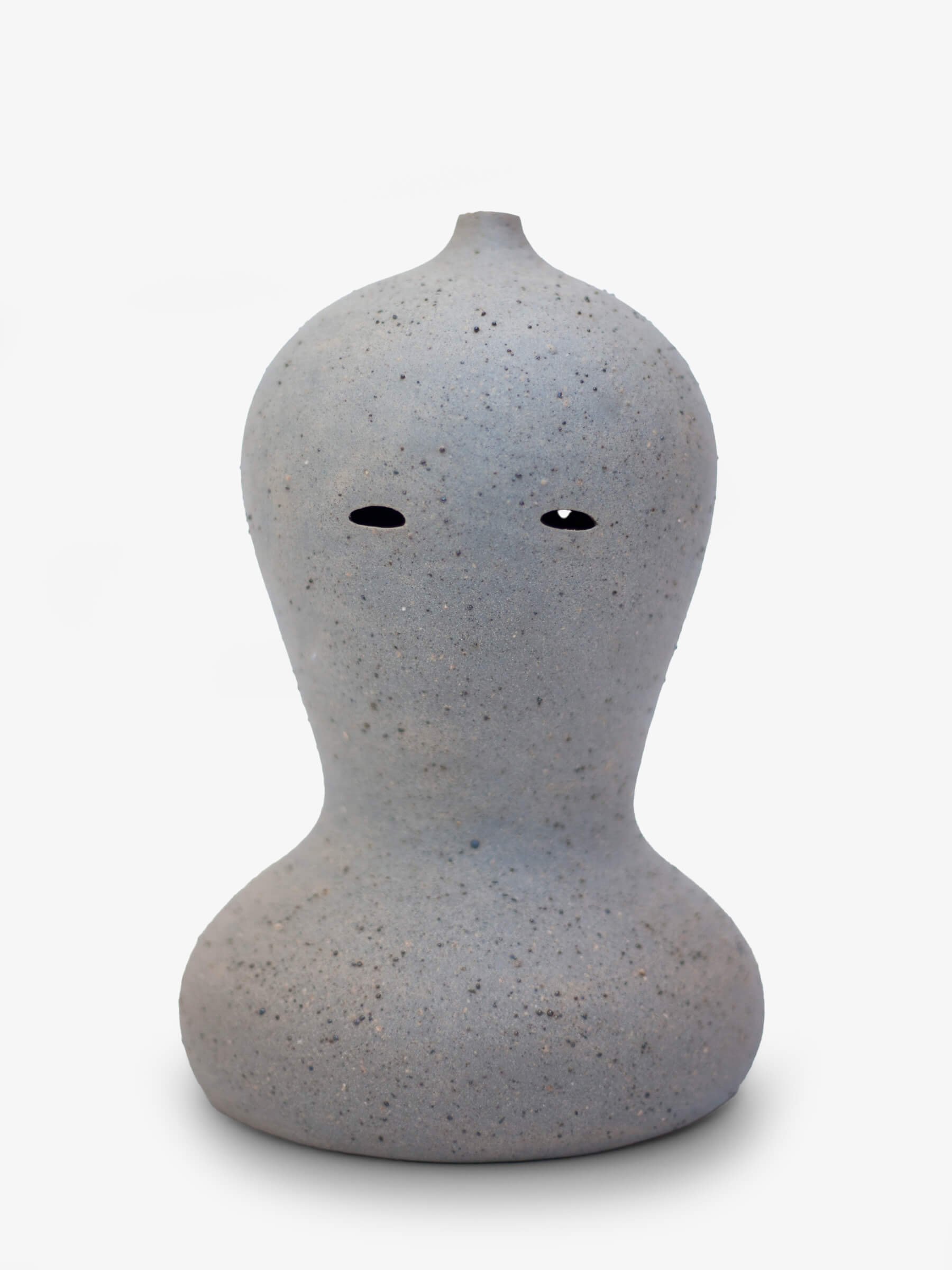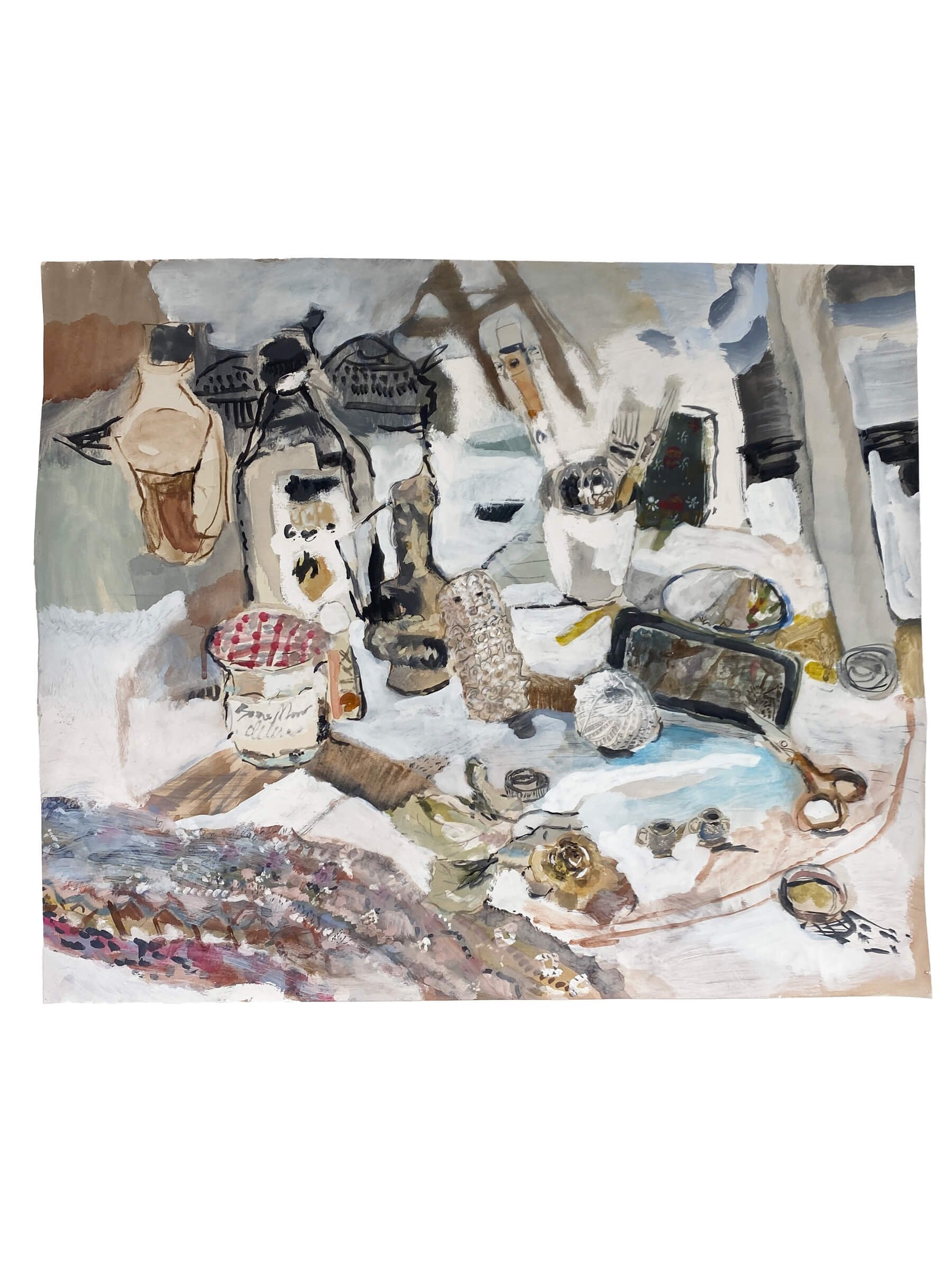
(Gallery Thirty Three, Wānaka)
At Wānaka’s Gallery Thirty Three, artists Kate Fitzharris, Eliza Glyn and Simon Kaan have brought their respective new exhibitions together under one roof to form "Home", an exploration of the physical, emotional and imaginative elements of what it means to be "home".
Ceramicist Fitzharris’ "Homeware" combines the tools and vessels of domesticity and everyday life with materials that stem from the earth itself, formed by the elements and stretches of time long beyond a human lifespan. She often incorporates materials that she finds on walks around her home in Waitati, investing each piece with intensely personal detail — and a universal sense of connection to the land on which we’re born and live, where every step marks a path walked by many before us and many after us.
Fitzharris’s characteristic style explores and celebrates the human form and customs, and in "Homeware", the carved and sculpted anatomical details seem to emerge from the depths of the clay, as if she’s coaxed the spirit of the works to the surface. In pieces like Grounded, the vessel appears to rise up from the solidity of its base like a living force, with the pared-back decorative details lending a sense of mystery and anticipation, the feel of something watching, waiting. She has a unique knack for making her works feel both new and old, as if they could equally be modern art or ancient artefacts, which underlines that sense of timeless continuity that’s often so essential to the concept of home.

(Gallery Thirty Three, Wānaka)
With her new show "Pale-Bright-Light", painter Eliza Glyn successfully takes the viewer on a journey through contemplation and stillness, vastness and intimacy, preoccupation and peace. Inspired by the muted, evocative palette and enveloping sense of atmosphere in Japanese woodblock prints, Glyn’s gorgeous landscapes are painted on boards with smooth layers and simplified forms, and a purposefully indeterminate sense of place.
In the washes of colour, a beautiful effect of diffused light often seems to come from within, illuminating the slightly abstracted scenes with a feeling of softness and safety. There’s an interesting effect with the movement of the eye, where horizontal brushstrokes emphasise that sense of calm and stillness, while more pronounced vertical streaks of paint can introduce a hint of tension. In Dreaming of Green and White 2, the clouds swirl inwards, reflected in the water below, and the composition does feel much more dreamlike and unsettled than the cool, calm layers of Two Worlds and Light Blue Chroma.
Moving from the vast world outside to the personal world inside, the landscapes are juxtaposed with Glyn’s still life works. In contrast to the openness and sweeping expanses of colour in the former, the still lifes are filled with myriad scattered detail, a cosy jumble of objects that hint at a daily routine, everyday stresses, cherished mementoes, building the picture of a distinctive personality and home — slices of a creative life in a very appealing, abstracted watercolour-sketch style that feels like a visual diary.

(Gallery Thirty Three, Wānaka)
Timeless, poignant and beautiful: highly renowned printmaker and painter Simon Kaan’s new collection evokes a powerful sense of home and connection, with his familiar waka motif representing both the artist and the important people in his life, those who were and remain part of his journey. Kaan’s work is often structured in layers, with the eye moving up and down the abstracted slices of sky, water and land. With a muted palette and thoughtful use of colour, tinges of blue, yellow and green seep into greyscale imagery like the soft glow of morning and evening light and similarly to Eliza Glyn’s work, there’s an atmosphere of stillness, tranquility and reflection.
In the Nohoaka Series, the black frames create the effect of viewing the scenes through a porthole or camera lens, as if we’re looking back at the past, with the waka in Nohoaka Series II-II seemingly travelling through mist and cloud, like the indistinct forms of old memories. The horizontal bands in Untitled V — some crisp, some more blurred — create a pattern like turning pages or a visual code, while the scroll intaglio prints have vertical rectangular canvases like unfurled scrolls, evocative of the storytelling and record-keeping that’s so important to our understanding and appreciation of our experiences and history. All of the images feel like open-ended stories, pieces of the puzzle, an absolutely infinite connection to the land, to other people, to the past, present and future.
By Laura Elliott












